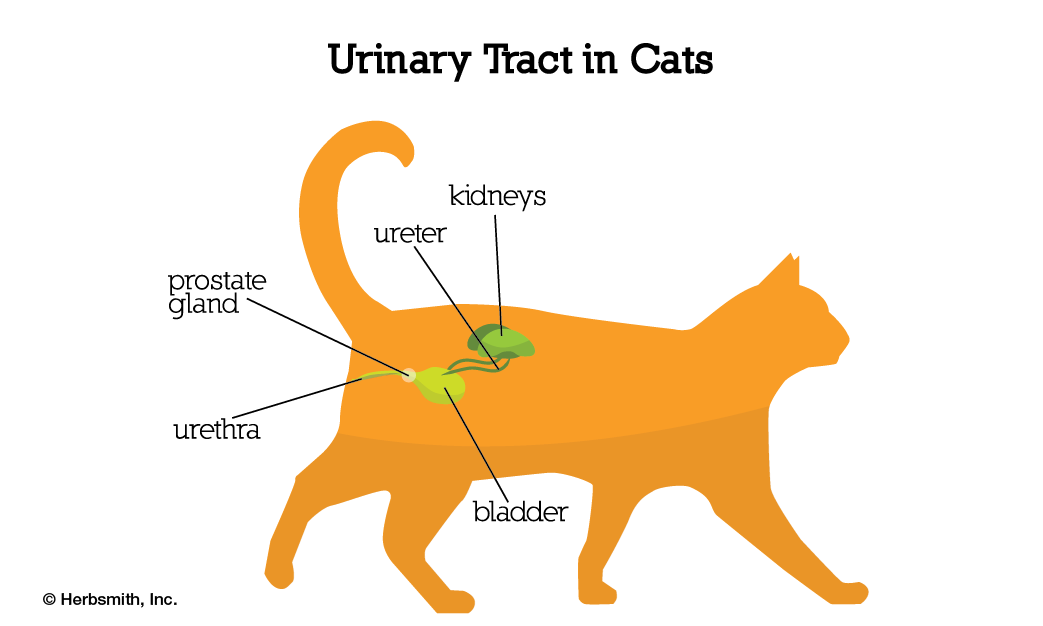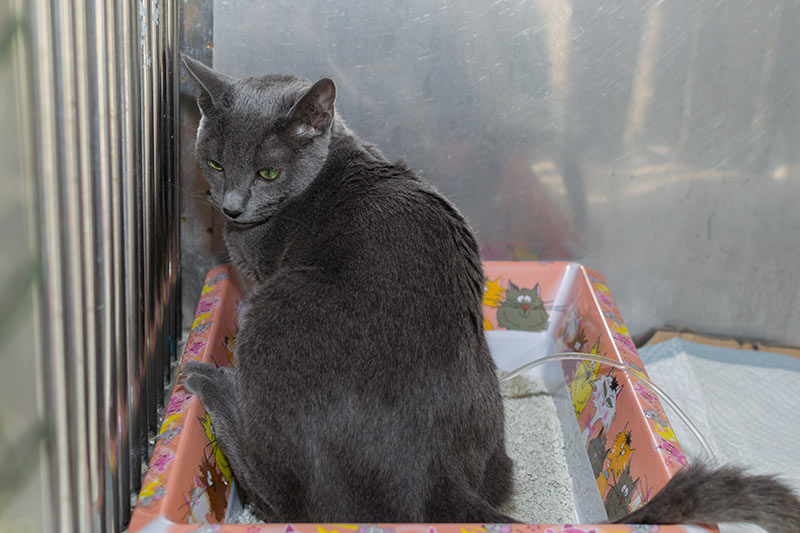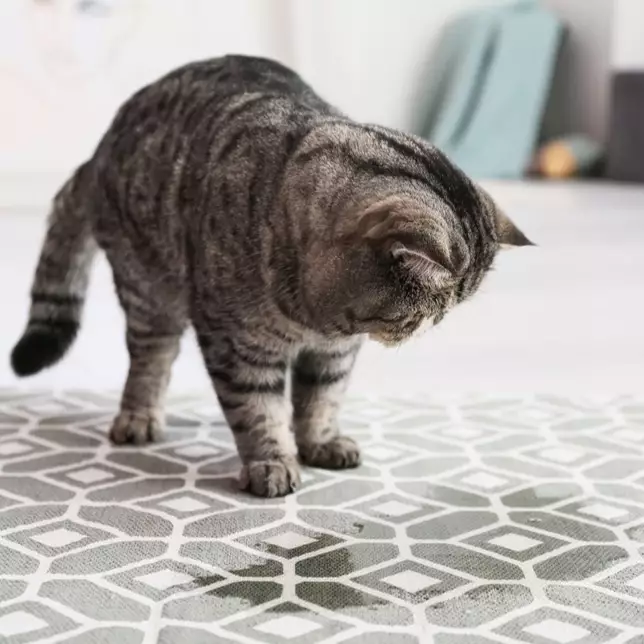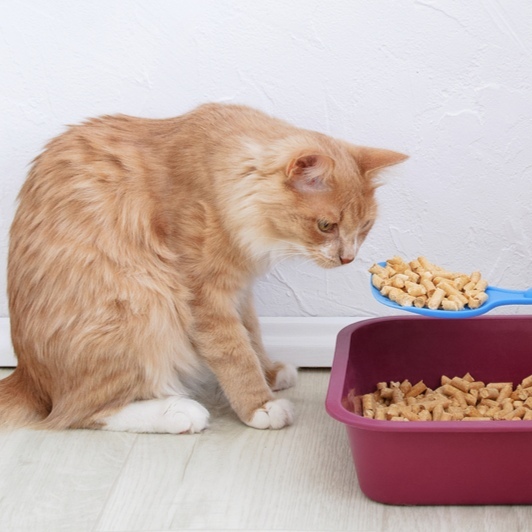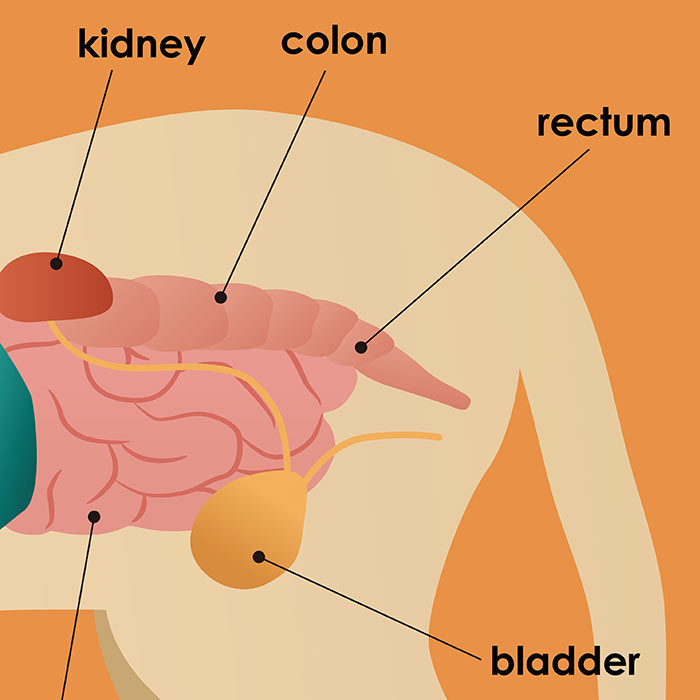Urethral disorder in cats
What is urethral disorder?
The urethra is the tube that allows urine to exit the body. Urine is produced in the kidneys and flows through tubes called ureters from the kidneys into the bladder. It is then excreted from the body through the urethra, the narrow tube which connects the bladder to the outlet. The body needs to be able to eliminate urine in order to get rid of substances, such as potassium and acid, that are harmful when they accumulate in the body.
In male cats, the urethra runs from the bladder through the penis to the outlet. At a certain point there is a bend in the urethra and it becomes narrower; in female cats the urethra is shorter, does not bend, and does not become narrower. Problems associated with the urethra are therefore more common, and more dangerous, in male cats.
A urethral disorder is any condition or problem affecting the urethra. There are three main urethral disorders that occur in cats:
- Urethral obstruction – a blockage, which may be partial or complete
- Urethritis – inflammation, sometimes caused by infection
- Urethral spasms – involuntary muscular contractions
Urethral obstruction in cats
Urethral obstruction is a potentially life-threatening emergency that occurs when material exiting the bladder cannot fit through the narrow urethra and becomes lodged. Bladder stones, crystals, sediment or other material can accumulate and form a ‘urethral plug’, preventing the outflow of urine. Male cats are typically affected because of their longer, narrower urethras.
When the urethra becomes partially or completely blocked, urine is unable to drain from the bladder, resulting in fluid, electrolyte, and pH (acid–base) abnormalities. Feline urethral obstruction is a relatively common condition, accounting for up to 10% of feline cases presented to small animal referral and emergency clinics.
Urethritis in cats
Urethritis is an inflammation of the urethra that can result from injury, infection or even cancer. The urethra swells and narrows, and the flow of urine is impeded by the narrowness of the passage, thereby contributing to urethral obstruction. Both urination and the urgency to urinate tend to increase. Urethritis can occur in male and female cats of any age and breed.
Urethral spasms in cats
The muscle around the cat’s urethra (the urethral sphincter muscle) can spasm involuntarily. A neutered male’s urethra is so narrow that these involuntary muscular contractions can be enough to cause an obstruction.
Symptoms of urethral disorder in cats
Not all cats with urethral obstruction exhibit the same symptoms. Some are asymptomatic, some show generalised signs of ill-health, such as being off their food or a little quieter than normal, while others will have obvious difficulty and pain when urinating. As the condition progresses, signs may become more evident.
However, these are some of the classical signs associated with urethral obstruction:
- Straining to urinate
- Making frequent visits to the litter tray but only producing a few drops at a time (‘spotting urine’)
- Blood in the urine
- Abdominal pain
- Crying out when urinating
- Crying out when touched
- Lethargy
- Reluctance to eat
- Reluctance to get up or move
- Vomiting
- Depression
- Collapse
When the urethra becomes inflamed (urethritis), your cat will most likely experience one or more of the following symptoms:
- Discomfort when trying to urinate
- Difficulty in passing urine
- Increased urge to urinate
- Straining to urinate
- Bloody urine
- Excessive urination
- Pain in the lower abdomen
- Blood or discharge from the genitals
- Inability to urinate
Causes of urethral disorder in cats
Neutered (castrated) young or middle-aged male cats are most susceptible to urethral blockages, but the problem can also occur in older cats and uncastrated males. All breeds of cats appear equally vulnerable. In some cases, the cause of the blockage is not discovered.
Typically, the urethra can become obstructed by:
- A ‘plug’ of material made up of an accumulation of proteins, cells, debris and little crystals that form and become lodged in the urethra; these substances are usually present in the urine in small amounts, but they can accumulate and then cause an obstruction.
- A stone (urolith) formed from minerals in the bladder, that travels to, and becomes lodged in, the urethra.
- A spasm, swelling or inflammation of the urethra, which severely narrows the passage through the urethra.
Contributing factors to obstruction of the urethra include:
- Not consuming enough water (either in their diet or by drinking)
- Not urinating often enough
- Being confined indoors
- Fed dry food only
- Being overweight
- Having had a previous urethral obstruction
Urethritis, or inflammation of the urethra, may be idiopathic (without a known cause), or it can be caused by any of the following conditions:
- Bacterial infection
- Bladder stones
- Bladder infection
- Vaginal infection
- Prostate infection
- Trauma
- Cancer
How is urethral disorder in cats diagnosed?
If you notice any of the symptoms of a urethral disorder, consult with a veterinarian as soon as possible. Diagnostic testing, procedures, and treatments will be aimed at identifying the underlying causes for the condition and managing the complications associated with a possible obstruction.
The veterinarian may perform any or all of the following:
- Physical examination to reveal the presence of a large, firm bladder.
- Bloodwork to assess toxin levels and hydration status.
- Urinalysis to look for infection-causing bacteria and/or crystals.
- Urine culture to determine if there is an infection and, if so, what bacteria may be responsible.
- Radiographs (X-rays) to look for bladder or urethral stones.
- Urethral cytology or an urethral biopsy, to look for cancerous cells.
Prognosis
In cases of urethritis, unless the diagnosis is cancer, the prognosis is very good, and the cat will most likely make a full recovery.
Having a urethral obstruction, however, is a life-threatening problem that requires urgent diagnosis and treatment; cats with a complete blockage may die within 2 to 3 days without treatment. Urethral obstruction can cause life-threatening complications. Urine contains waste products that the body needs to eliminate; urethral obstruction causes these toxins to build up. Another possible complication of urinary obstruction is scarring of the urethra, which makes it even narrower and prone to future blockages. Most cats that die, succumb to fatal cardiac arrhythmias (that occur as a result of electrolyte imbalances), or metabolic issues relating to the build-up of toxins in the blood.
With prompt medical attention, the prognosis is good; the majority of cats will survive the first occurrence of an obstruction. Some cats will never have another episode; in others, a second episode does not occur for years. However, there is a small percentage of cats that will suffer another blockage fairly soon, within days, weeks or months.
Treatment for urethral disorder in cats
The treatment provided will depend on the underlying cause of the urethral disorder, if any is found. If the cause of urethritis is a typical bacterial infection, the vet will prescribe antibiotics to help eliminate the bacteria from the cat’s system.
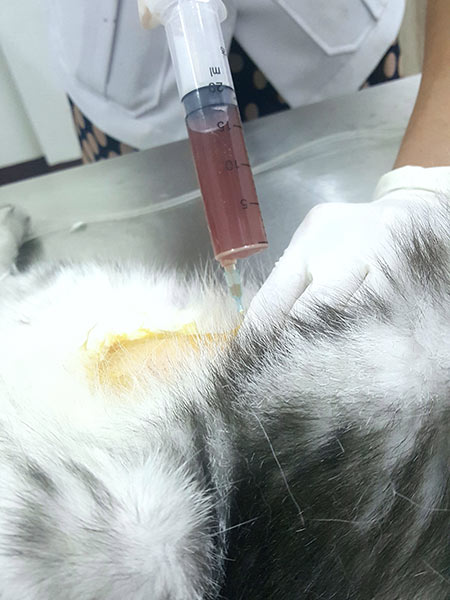
If urethral obstruction is confirmed, hospitalisation for emergency treatment and stabilisation is essential. The immediate focus of treatment is to re-establish the flow of urine, to eliminate toxins that may have accumulated in the body, and to restore normal electrolyte levels.
Procedures for treatment of an obstruction may include:
- Removal of urine directly from the bladder, by inserting a needle into it and draining the urine out with a syringe. Called ‘cystocentesis’, this procedure can be a life-saving short-term solution for blocked cats.
- Urinary catheter insertion (under sedation or general anesthesia), to drain urine from the bladder and keep it empty for 2 to 3 days while inflammation subsides.
- A fluid drip, to allow fluids and medications to be administered intravenously.
- Blood tests, especially to check potassium levels; a blocked bladder can cause high potassium levels (hyperkalaemia), which can dangerously affect the way that the heart beats.
- An ECG (electrocardiogram) can also be done to ascertain any effects on the heart.
- Antibiotics, if a bacterial infection is confirmed.
- Drugs to suppress muscle spasms (spasmolytics), to relax the urethral muscles so as to allow material to pass through it.
- Anti-inflammatory medication to reduce inflammation in the urethra and make it easier to urinate.
- Pain-relieving medication.
- Cystotomy (surgery to remove bladder stones).
- Perineal urethrostomy, surgery to make the urethral opening permanently larger, thus reducing the risk of future obstructions for cats with repeated blockages.
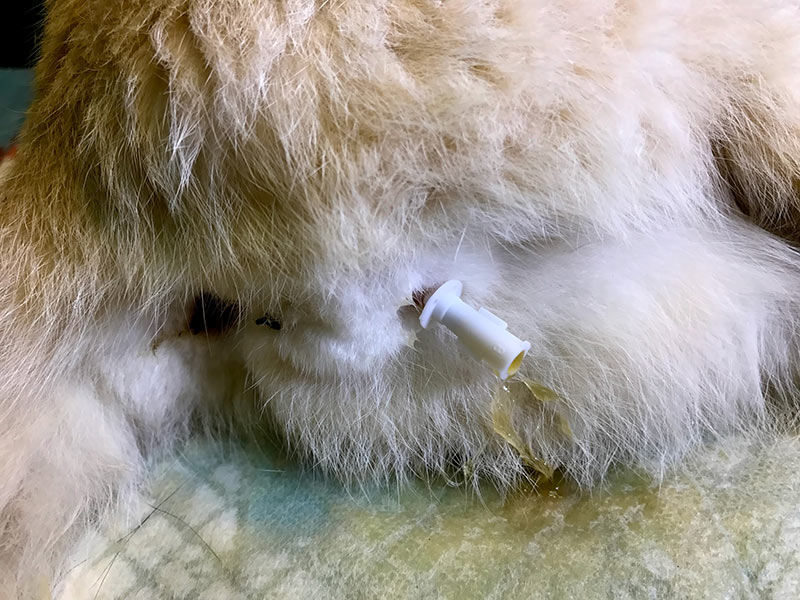
Prevention of urethral disorders in cats:
Preventing feline urethral obstruction and inflammation is challenging, as it is not always known what causes them. Strategies that may help in preventing further obstructions include:
- Prompt treatment of bladder infections, as these may play a role in the formation of urinary sediment and stones.
- Increasing water intake may be beneficial, particularly if the cat is on a fairly dry diet.
- A prescribed diet can help establish a healthy urine pH and bladder environment in cats that are susceptible.
- Allow the cat access to outdoors as much as possible, as indoor cats are more susceptible.
- Maintain the cat’s weight at the correct level, as overweight cats are more at risk.
- Minimise stress in the home, often caused by boredom and dirty litter boxes, as much as possible.
- Providing a different type of litter tray or litter may encourage the cat to urinate more frequently.
- Monitor the cat’s urinary habits, and consult the vet if urination appears troublesome in any way.
In summary
A urethral disorder is any condition or problem affecting the urethra, which is the narrow tube by which urine exits the body. The three main urethral disorders that occur in cats are urethral obstruction (a blockage of the urethra), urethritis (inflammation of the urethra), and urethral spasms (involuntary muscular contractions). Typical symptoms of a urethral disorder include urinary difficulties, such as trying multiple times to urinate, without success.
The most serious of the urethral disorders is a blocked urethra, as this is potentially life-threatening if left untreated. Blockage can be caused by stones (uroliths), crystals or an accumulation of debris termed ‘urethral plugs’. The neutered male has the highest incidence of this condition because of the narrowness if his urethra. If a cat has signs of a blocked urethra, it is critical to seek veterinary care immediately so that the obstruction can be removed.
Bow Wow Meow Pet Insurance can help protect you and your cat should an unexpected trip to the vet occur.
-
Find out more about our cat insurance options
-
Get an online pet insurance quote
Bow Wow Meow is proud to have been awarded winner of Canstar’s ‘Most Satisfied Customers’ Award in the Pet Insurance category for both 2024 and 2025!
Bow Wow Meow is proud to have been chosen as Product Review’s Pet Insurance Award Winner every year from 2018 to 2025! This is based on 2,995 independent customer reviews (as at 21/01/2025), with an overall rating of 4.3*
Google Review rating = 4.5* (based on 968 reviews)
Trust Pilot rating = 4.6* (based on 531 reviews)
Bow Wow Meow is proud to have been chosen as Product Review’s Pet Insurance Award Winner every year from 2018 to 2025! This is based on 2,995 independent customer reviews (as at 21/01/2025), with an overall rating of 4.3*
Google Review rating = 4.5* (based on 968 reviews)
Trust Pilot rating = 4.6* (based on 531 reviews)
Bow Wow Meow has been chosen as a winner in the Finder Pet Insurance Awards 2024. Finder’s panel of experts analysed over 140 quotes to award our Ultimate Care Plan the winner of the “Pet Insurance – Value” category.
More information
- http://www.vetstreet.com/care/urethral-obstruction-in-cats
- http://www.theveterinaryexpert.com/emergencies/blocked-cats-part-1/
- https://wagwalking.com/cat/condition/inflammation-urethra
- https://www.merckvetmanual.com/cat-owners/kidney-and-urinary-tract-disorders-of-cats/the-urinary-system-of-cats
- https://www.merckvetmanual.com/cat-owners/kidney-and-urinary-tract-disorders-of-cats/noninfectious-diseases-of-the-urinary-system-of-cats#v3247565
- https://www.merckvetmanual.com/cat-owners/kidney-and-urinary-tract-disorders-of-cats/urinary-stones-uroliths,-calculi-in-cats
- https://todaysveterinarynurse.com/articles/urethral-obstruction-in-male-cats/
- https://www.petmd.com/blogs/thedailyvet/jcoates/urinary/2011/june/feline_urinary_issues-the_blocked_cat-11353
- https://icatcare.org/advice/cat-health/urethral-obstruction-cats
- https://www.petplace.com/article/cats/pet-health/urethritis-in-cats/

